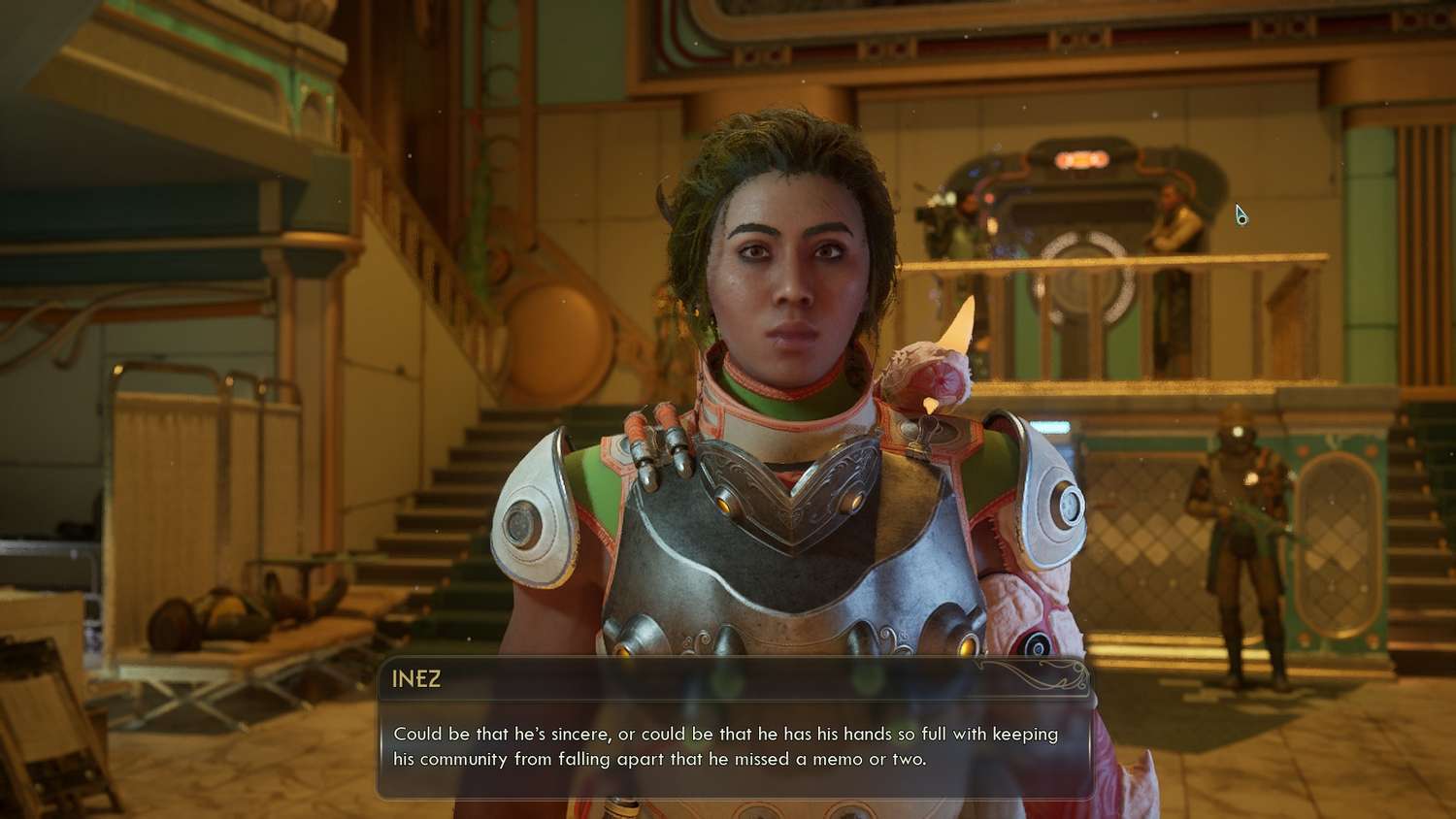Analyzing the Kaur vs Milverstreet Corporate-Revolution Conflict in Outer Worlds 2’s Open World RPG
Popular Now
 PUBG Mobile
PUBG Mobile
 Schedule I
Schedule I
 Counter-Strike 2
Counter-Strike 2
 Poppy Playtime
Poppy Playtime
 BeamNG.drive
BeamNG.drive
 Candy Crush Saga
Candy Crush Saga
 Gacha Club
Gacha Club
 EA SPORT FC 25
EA SPORT FC 25
 Black Myth: Wukong
Black Myth: Wukong
 Fall Guys
Fall Guys
 The highly anticipated sequel, Outer Worlds 2, promises to deepen the franchise’s legacy of complex moral choices, high-stakes political intrigue, and unforgettable companions. While details from Obsidian Entertainment remain tightly guarded, early speculation and leaked concepts point to a central, galaxy-defining conflict: the struggle between the radical reformist, Commander Kaur, and the corporate behemoth represented by Executive Milverstreet. This choice is not merely a fork in the road; it is the philosophical core of your New Halcyon Colony playthrough, determining the fate of countless settlers and the very definition of freedom in the open-world RPG landscape.
The highly anticipated sequel, Outer Worlds 2, promises to deepen the franchise’s legacy of complex moral choices, high-stakes political intrigue, and unforgettable companions. While details from Obsidian Entertainment remain tightly guarded, early speculation and leaked concepts point to a central, galaxy-defining conflict: the struggle between the radical reformist, Commander Kaur, and the corporate behemoth represented by Executive Milverstreet. This choice is not merely a fork in the road; it is the philosophical core of your New Halcyon Colony playthrough, determining the fate of countless settlers and the very definition of freedom in the open-world RPG landscape.
As experienced space-faring players of the first installment know, every major decision in this series carries permanent, branching consequences, making the Kaur vs Milverstreet dilemma arguably the most significant Consequence-Driven Gameplay mechanic. It forces players to confront a classic Obsidian dilemma: choose stability and oppression, or chaos and potential liberation?
The Case for Commander Kaur: Revolution or Anarchy?
Commander Kaur emerges as the voice of the marginalized, leading the ‘Astra’ movement, a coalition of disenchanted scientists, dispossessed colonists, and ex-corporate workers determined to dismantle the rigid, life-controlling structure of the Consolidated Board. Kaur’s manifesto centers on the redistribution of resources, the establishment of decentralized governance, and a return to fundamental human rights, placing her firmly in the role of the anti-establishment revolutionary. Siding with Kaur offers a path toward true self-determination for the colonies, but at a severe cost.
The Astra movement is characterized by its zealotry and its willingness to employ often brutal, destabilizing tactics. Their methods include sabotage of vital infrastructure and aggressive recruitment that borders on coercion. This path is high-risk, high-reward, appealing to players seeking the Best Faction Ending rooted in genuine, grassroots change, even if it plunges the colony into a potentially fatal temporary anarchy.
- Strong:Potential Pros of Siding with Kaur (High-Stakes Decision):
- True Autonomy: The only path guaranteed to completely break the Corporate Board’s stranglehold, offering maximum freedom for settlers.
- Unique Gear and Companions: Access to powerful, often volatile, prototype weapons and armor, reflecting Astra’s anti-corporate scavenging. You also unlock exclusive revolutionary companions with strong anti-corporate skill sets.
- Thematic Consistency: Aligns perfectly with the anti-capitalist, pro-individual theme of the Outer Worlds franchise, offering catharsis for those who despised The Board.
- Strong:Potential Cons of Siding with Kaur (Risk of Unforeseen Consequence):
- Economic Collapse: Disrupting the centralized corporate supply lines could lead to mass shortages of essential goods, medical supplies, and food, causing widespread famine and unrest.
- Internal Conflict: Kaur’s movement is highly fractured, and siding with her may require you to immediately suppress rival revolutionary or even anarchist sub-factions, complicating the narrative.
- Loss of High-CPC Corporate Opportunities: This choice locks you out of several lucrative, high-credit corporate questlines and gaming investment opportunities.
The Case for Executive Milverstreet: Stability or Corporate Tyranny?
On the opposite end of the spectrum is Executive Milverstreet of the powerful ‘Chrono-Synth’ megacorporation, a new entity that is attempting to stabilize the remnants of the old Board’s chaotic structure. Milverstreet presents a seemingly rational, pragmatic solution: a return to order, guaranteed food and resource production, and the suppression of violent dissent. Milverstreet’s campaign is built on the promise of Corporate Security and predictable survival, arguing that freedom is meaningless without functioning infrastructure.
Milverstreet’s proposal is deeply tempting. They control the shipyards, the primary Terraforming assets, and the bulk of the remaining military-grade security forces. Accepting their offer guarantees immediate, measurable stability. However, this stability comes tethered to the oppressive, soul-crushing bureaucracy and ruthless efficiency that defined the worst aspects of the Halcyon Colony. Milverstreet simply replaces one tyrant with another, albeit a more organized, better-funded one.
- Strong:Potential Pros of Siding with Milverstreet (Strategic Pragmatism):
- Immediate System Restoration: Access to Chrono-Synth’s advanced engineering and logistical network, instantly restoring power, transport, and food production.
- Advanced Technology Quests: This path unlocks sophisticated, often ethically questionable, quests that reward the player with the best in corporate-funded research Technology, including powerful energy weapons and superior armor plating.
- Guaranteed Survival Rate: For the average, non-revolutionary settler, this choice ensures immediate physical safety and provision, minimizing civilian casualties in the Open World Choices.
- Strong:Potential Cons of Siding with Milverstreet (Moral Degradation):
- Loss of Freedom: Settlers become little more than cogs in a massive corporate machine, their lives, careers, and even personal choices dictated by quarterly profit reports.
- The Betrayal Arc: This choice inevitably leads to the betrayal or execution of former friendly NPCs who are aligned with the Astra movement, creating deeply emotional and often brutal companion side-quest resolutions.
- The Status Quo: You are essentially choosing to perpetuate the same system of exploitation the franchise is famous for critiquing, leading to a narratively darker, though economically sound, Replayability path.
 The SEO-Optimized Consequence Matrix and Future Playthroughs
The SEO-Optimized Consequence Matrix and Future Playthroughs
Veteran players of Obsidian RPGs understand that the real value lies in the Replayability and the intricate consequence matrix woven into the narrative fabric. The Kaur vs Milverstreet dilemma is speculated to be a ‘point of no return’ that impacts a minimum of four major planets/settlements in Outer Worlds 2, influencing factors such as:
- Companion Loyalty: Several companions will have hard-coded alignments. Siding against their philosophy will trigger unique, high-drama personal quests, potentially leading to their permanent departure or even hostile confrontation.
- Trade & Resource Flow: Milverstreet’s victory means expensive, corporate-controlled goods (high credits, high CPC items). Kaur’s victory means cheap, black market, often unregulated goods (high risk of failure, low credit cost).
- Skill Checks: The skills prioritized will shift drastically. A Kaur path will favor Persuasion, Intimidation, and Tech Repair, while a Milverstreet path will heavily rely on Lie, Science, and Dialog Control.
This duality is excellent for Gaming Investment, ensuring that a player must complete at least two full playthroughs—one for each faction—to experience the full breadth of the content, dialogue, and ending slides. The differences extend far beyond the final cinematic; they permeate every open-world encounter and faction reputation check after the initial commitment.
Final Analysis: Which Choice Yields the Best Faction Ending?
Based on the narrative structure of the franchise, there is no single “best” choice in the Kaur vs Milverstreet conflict. Both paths are ethically compromised and mechanically rewarding. Your choice will define your Captain’s moral compass and your philosophy on galactic governance.
Strong:The revolutionary path with Kaur is for the player who values ideological freedom above all else and is willing to witness short-term, brutal chaos for the chance at a genuinely new society. This is the morally righteous but pragmatically reckless decision.
Strong:The corporate path with Milverstreet is for the pragmatist, the Strategic Investor who understands that complex problems often require stable, powerful, if morally dubious, hands to solve. This is the morally compromised but pragmatically sound decision.
Ultimately, the core of Outer Worlds 2 will be the personal narrative. Obsidian Entertainment has perfected the art of making the player live with the consequences of their actions. Our advice for the Best Faction Ending is simple: choose the faction that aligns with your role-playing vision and embrace the chaos or order that follows. Only then can you fully appreciate the depth of this new high-stakes RPG choice.










